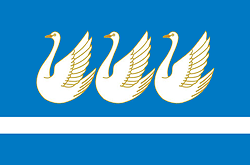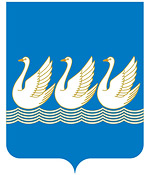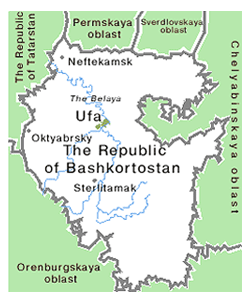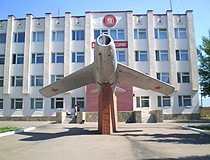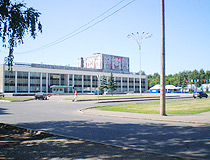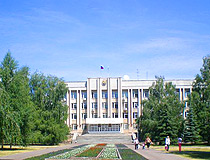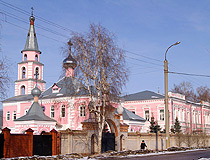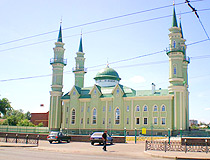Sterlitamak - Overview
Sterlitamak is a city in Russia, the second most populous city of the Republic of Bashkortostan, standing on the left bank of the Belaya River, 127 km south of Ufa. It is a large center of chemical industry and mechanical engineering.
The population of Sterlitamak is about 275,000 (2022), the area - 108 sq. km.
The phone code - +7 3473, the postal codes - 453100-453130.
History of Sterlitamak
In the early 18th century, on the territory of present Sterlitamak, there was a Tatar village with a post station on the road from Ufa to Orenburg. Under the decree of Empress Catherine II, the merchant Tetyushev founded a salt wharf on the Ashkadar River (Ashkadarskaya wharf), which was merged with the village and later became known as “Sterlitamakskaya wharf” (under this name, it was mentioned in Tetyushev’s official papers).
During the rebellion of Pugachev (1773-1775), Sterlitamak was ruled by rebels and later was burned. After restoration, it became an administrative center of Sterlitamaksky uyezd (district) and, in 1781, the village turned into a town.
Private enterprises came into being in the town as well as a lot of handicraft industries (leather, flour-grinding, production of vodka and beer). After the abolition of serfdom, Sterlitamak grew in population and territory, several large enterprises were opened. In 1870, the buildings of the City Council and the District Government were constructed.
More Historical Facts…
In 1920, Sterlitamak became the capital of the newly formed Bashkirskaya Autonomous Soviet Socialist Republic (BASSR). Later, in 1922, the capital was transferred to Ufa.
Before the World War II, Sterlitamak grew rapidly mainly due to the growth of the size of local enterprises and construction of new ones. In 1922, a power station was put into operation, sawmills were merged into one large factory. In 1930, the population of the town was about 24,000 people. In 1932, oil production began in the territory of the future town of Ishimbai, located south-east of Sterlitamak.
During the World War II, a lot of industrial plants were evacuated to Sterlitamak as well as the Voronezh State Drama Theater. In 1961, the first in Bashkortostan trolleybus line was opened in the city.
In 1984, the population was 238,000. By the end of the 1980s, Sterlitamak was one of the most polluted cities in the country.
Streets of Sterlitamak
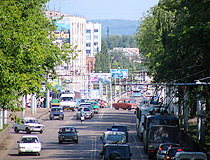
Busy street in Sterlitamak
Author: Andrey Danilov
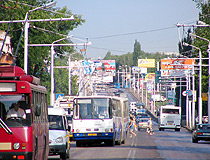
Sterlitamak street
Author: Andrey Danilov
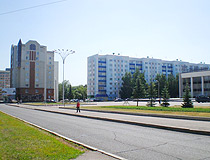
Sterlitamak cityscape
Author: Oleg Ronzhin
Sterlitamak - Features
Sterlitamak is located in the European part of Russia, just south of the geographical center of the Republic of Bashkortostan. The Ural Mountains are located approximately 50 kilometers east of the city. It is the second largest industrial and cultural center of the republic after Ufa.
The name of the city derives from two words: “Sterlya” - the river on which it is located and “tamak” meaning “throat” or “mouth” in Bashkir language. Three silver geese depicted on the coat of arms of Sterlitamak historically meant an abundance of these birds in this area.
The location of Sterlitamak is unique: four rivers cross the city area (Sterlya, Belaya, Ashkadar, and Olhovka). The average temperature in January is minus 11.7 degrees Celsius, in July - plus 20.9 degrees Celsius.
Sterlitamak is native to a number of world-famous personalities: Tatyana Lebedeva - the world champion in triple-jumping; Irek Zaripov - the participant of Para Olympics 2010 in Canada, who won four golden and one silver medals in ski races and biathlon; Raisa Gorbachev - M.S.Gorbachev’s wife, who graduated from the local high school with a gold medal.
Almost half of the city’s working population is employed in industry. The local economy is based on large chemical and oil-processing plants as well as machine-building and tool-making industries. Sterlitamak is known in Russia and abroad for its products: synthetic rubber, soda, synthetic detergents, cement and slate, metal-cutting tools, pipe-laying cranes, bulldozers as well as equipment for oil-fields and geological exploration.
A significant part of intracity passenger traffic is carried by trolleybuses - the purest form of transport from an environmental point of view. The highways R240 Ufa - Orenburg and R316 Sterlitamak - Magnitogorsk pass near the city.
Ethnic composition according to the National Population Census 2010: Russians - 49.5%, Tatars - 23.9%, Bashkirs - 15.8%, Chuvash - 5.3%, Ukrainians - 1.9%, Mordvinians - 1.5%
Attractions of Sterlitamak
There about about 60 monuments of history and culture in the city. Victory Square with “Eternal Flame” memorial complex is the central square of Sterlitamak.
The main places of interest are:
- Museum of Local History (Karl Marx Street, 100),
- Art Gallery (Kommunisticheskaya Street, 84),
- State Russian Drama Theater (Hudayberdina Street, 18),
- State Bashkir Drama Theater (Lenina Avenue, 30v),
- Philharmonic (Lenina Avenue, 2a),
- Park of Culture and Rest named after Gagarin.
Sterlitamak is surrounded by four lone mountains called “shikhany” (Yuraktau, Kushtau, Shahtau, Tratau). They are located close to each other, on the right bank of the Belaya River. These mountains have rich deposits of rock salt and limestone. In addition, they are of interest for tourists and sportsmen.


